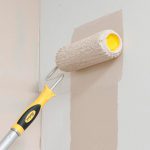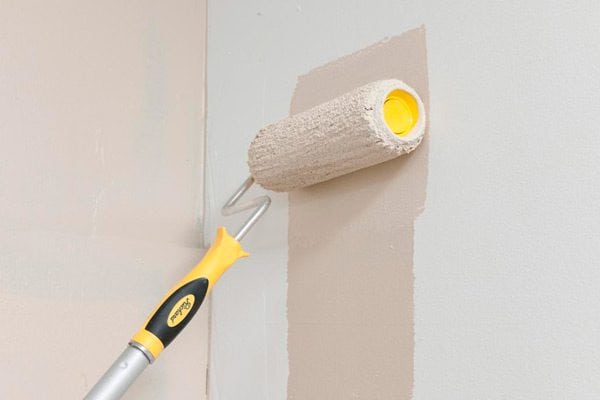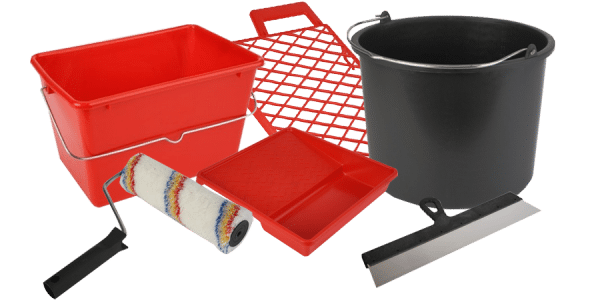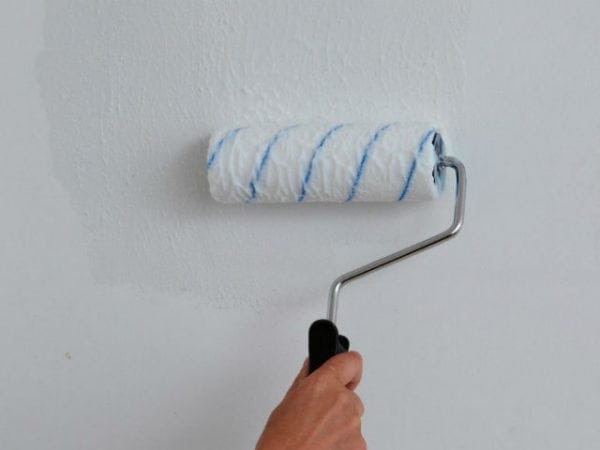At the beginning of the process of painting the walls, it is necessary to choose the right paint, and then the roller itself. For interior painting, water-based, acrylic paints are more often used. They are harmless to health, have no toxic odors, are diluted with water and dry quickly. In addition, such paints are suitable for a different basis - wood, stone, concrete, brick.
Water-based paint for walls Provides workable surfaces with vapor permeability, breathable effect, the microclimate of the room becomes favorable. The coating quality during operation remains bright and saturated. Read about how to paint with a roller and how to choose it correctly.
to contents ↑Which is better to choose a roller
For work with water-based, acrylic paints, rollers are excellent. They are often used for interior painting. Rollers are different in skin and size. Knowing all their features, you can decide which roller to paint the walls better.
The most popular rollers are foam rubber. Such material wears out quickly, but inexpensively. Rollers for oil compositions or enamels are better to take fur, velor. These tools made of polyamide, thread-proven, worked well. For deep relief and creating the necessary texture on the surface, it is better to choose a roller with a long pile.
Rollers are durable, easy to clean and after use they can be stored until the next repair. In size they are divided into large, medium and small. Professionals are the first to work, medium ones are convenient for painting walls at home, small ones are used for painting near baseboards, doorposts, windows.
to contents ↑Recommendations before painting the walls
Considering the tips below, your technique for working with a roller will increase, which will affect the quality of the repair:
- Estimated cladding area should be measured to know the required amount of material. Choose a color will help a large assortment in the trading network of the color gamut of water-based, acrylic paints. Their consumption is always indicated on the label of the can, there is also a drying time.
- After the paint, it is worthwhile to purchase a primer, putty (deep penetration, starting, finishing), sandpaper, masking tape, plastic film.
- You will also need additional tools - a bucket, brush, gloves.
- The surface to be painted must be carefully prepared. The scraper removes old layers of paint, wallpaper. After the surface is degreased, putty cracks and chips are closed.
- Using an emery bar, roughnesses are removed (wall polishing), the resulting dust is removed with a damp cloth.
- To ensure that the paint is firmly bonded to the substrate, the entire prepared surface is treated with several layers of acrylic primer. As a result, the painting will be even and durable.
- Each subsequent primer coat is applied only after the previous one has completely dried.
- Paint is diluted in accordance with the instructions on the can. The emulsion is poured into a tray and you can start painting, after wearing glasses.
Such recommendations are useful to those who want to know how to paint the walls with a roller correctly.
Roller Technology
To get a perfectly smooth and neatly painted surface, you need the right roller technique. It has characteristic features:
- Borders of painting are designated by masking tape. It should be on the same level, which is checked by the alcohol or laser level. When attaching a tape, it is advisable to press it in for a snug fit to prevent water-based paint from getting under it. The height, shape, size and location of the tape can be anything - vertical, horizontal, high or low. It depends on the intended interior and the taste of the owner. The tape is removed when the coating dries completely.
- The roller is not completely placed in the paint, the axis of the tool must remain dry. Several twisting movements are made on the ribbed wall of the pallet to evenly distribute the paint throughout the masking tape, which can be removed, washed and stored upon completion of repairs.
- The movements with the roller should resemble the letter W, that is, up and down, if horizontally, then from left to right, with a brush in some narrow places crosswise. Vertical movements in one direction leave traces. Knowing how to paint the walls with a roller without stains, you can get the perfect result.
- The sequence of work - the ceiling is painted first, then the walls. Usually start from a corner or doorway. It uses a small roller
- A lot of paint with one stroke should not be applied, smudges, drops should be rolled out. Often, one coat of water-based paint is not enough. They are applied at least two, and each next, when the previous one is completely dry.
- If the smears are heterogeneous, the roller is updated.
- If there is no way to take out the furniture, it is moved to the middle of the room, covered with covers or film, which is fixed with masking tape. The same is done with doors, windows. Drips of water-based paint from such surfaces is difficult to remove.
- For high-quality painting near the wiring, the power must be turned off, the sockets must be protected with the same tape.
- After painting the walls, all the switches, sockets that were removed at the beginning of the work, the sockets are installed in their places, the floor is cleaned, furniture covers are removed.
Work with the roller and water-based paint should not be delayed. Water, absorbed into the surface, evaporates quickly.
Before starting the painting, it is worth putting on clothes, which afterwards will not be a pity to throw away. This knowledge can be useful when using paints with oil, enamel and other compositions, because the basic principles of working with a roller are the same.








